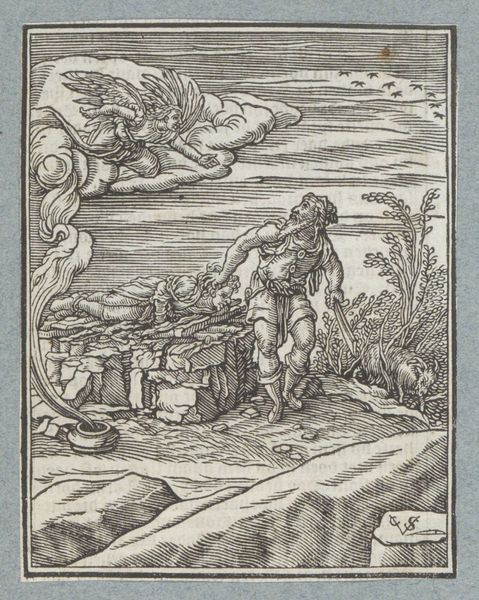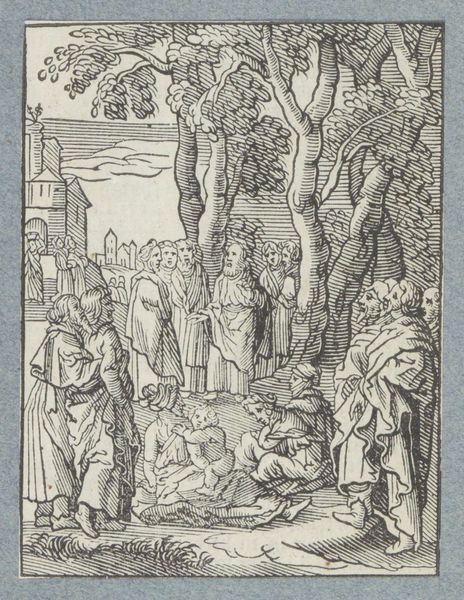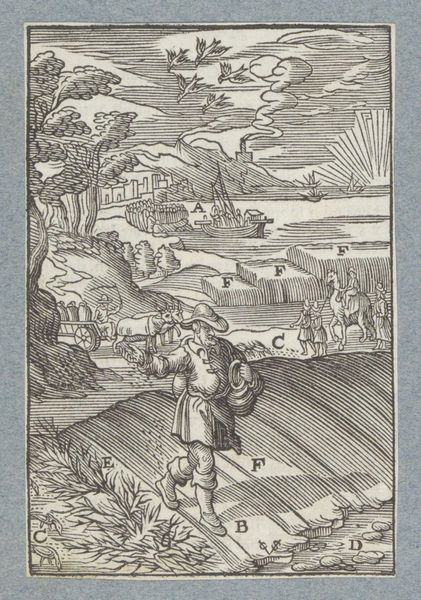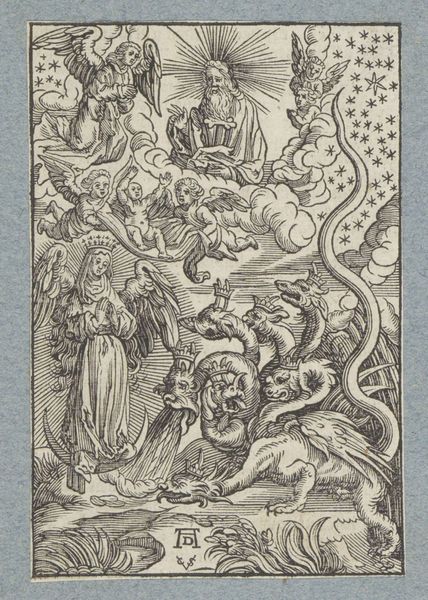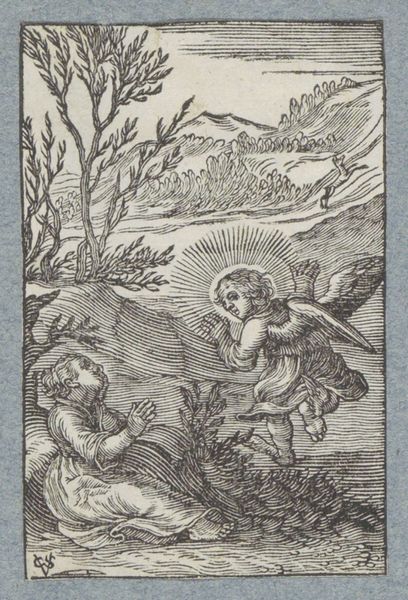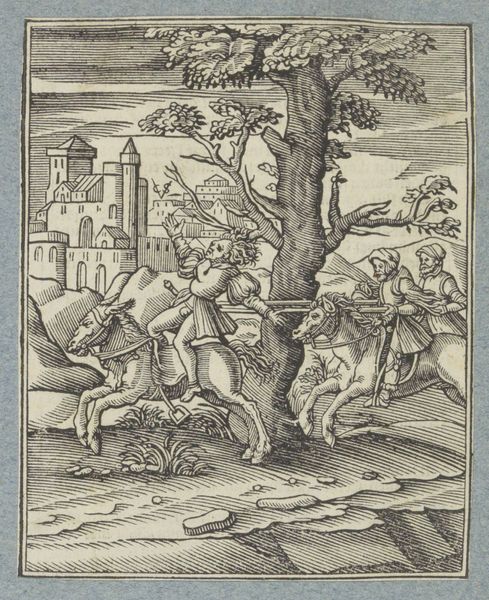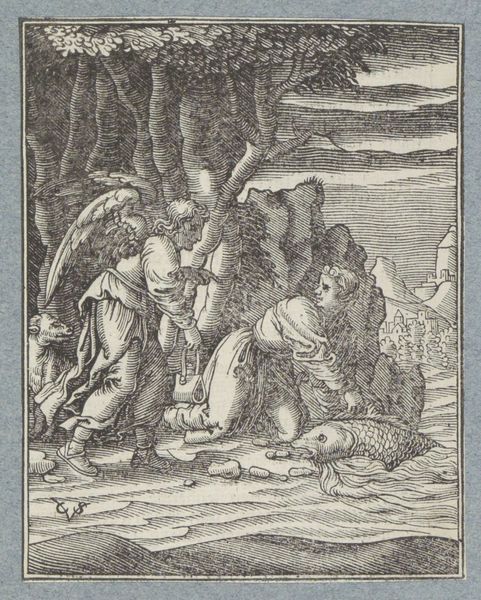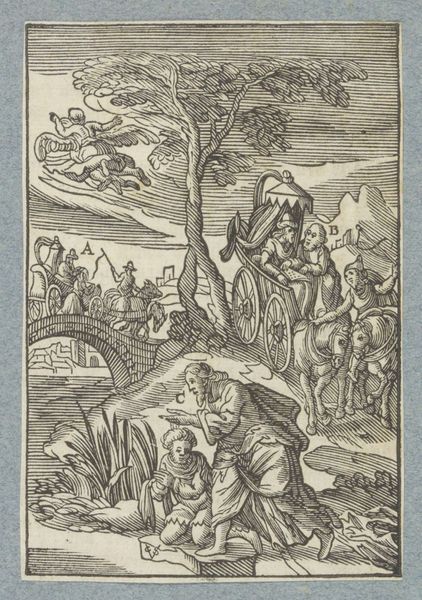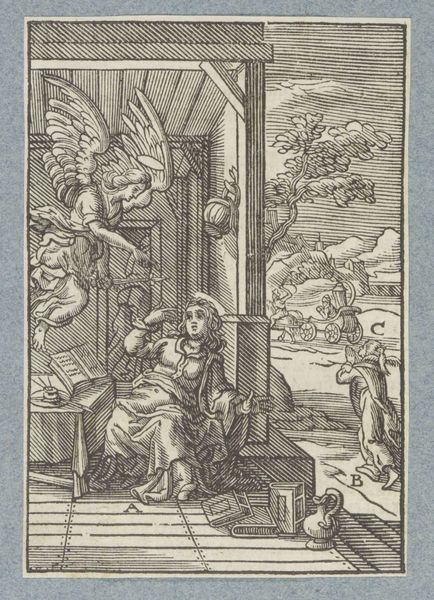
drawing, print, woodcut, engraving
#
drawing
#
baroque
#
pen drawing
#
dutch-golden-age
# print
#
landscape
#
figuration
#
linocut print
#
pen-ink sketch
#
woodcut
#
line
#
history-painting
#
engraving
Dimensions: height 111 mm, width 81 mm
Copyright: Rijks Museum: Open Domain
Editor: Right now, we’re looking at "Elia gevoed door de raven" made between 1645 and 1646 by Christoffel van Sichem II. It's a woodcut, housed here at the Rijksmuseum. The landscape feels really claustrophobic, even a little ominous. How do you interpret this work, especially the intense feeling of the landscape? Curator: That’s a fascinating starting point. It does feel constricting, doesn’t it? I'm immediately drawn to the texture—the almost frenetic energy of the lines creating form and shadow. For me, that evokes the wildness and the desperation inherent in the biblical story of Elijah being fed by ravens in the wilderness. Do you see how the lines create not just shapes, but a kind of emotional weather around the figures? Editor: Absolutely, it’s like the landscape itself is a character in the story, pushing in on Elijah. I guess it reflects his isolation, and even his faith being tested. Curator: Precisely! The dramatic Baroque style, typical of Dutch Golden Age art, amplifies this tension. Think of light and shadow as symbolic elements: the stark contrasts can represent divine intervention amidst human struggle. Makes you wonder, what were people wrestling with at this time in history that this story resonated so deeply? Editor: That makes the image much richer, considering the historical background. I hadn’t considered how much the landscape added to the narrative's tension. Curator: And, isn't it extraordinary how the simplest of materials can convey so much complexity? Woodcut feels incredibly appropriate. Almost elemental, somehow. Editor: Definitely, it's like the roughness of the woodcut underscores the rawness of Elijah’s situation. Seeing the landscape as more than just a backdrop has totally shifted my perspective on the print. Thanks!
Comments
No comments
Be the first to comment and join the conversation on the ultimate creative platform.
